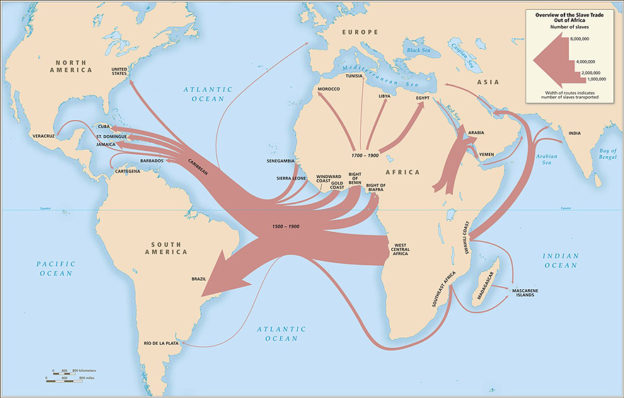Relational databases were an important business innovation because they finally allowed corporations to see what was actually going on in their company. Its predecessors, hierarchal databases were, brittle inflexible and hard to use. SQL and Oracle’s first commercial introduction of relational databases made it not only convenient but necessary for companies to compete. SQL allowed approachable and syntax simple statements to perform powerful calculations. Being able to easily know how many ‘men over forty bought sport tires’ gives you an incredible advantage in understanding how to optimize your inventory for certain regional locations. Now instead of sports tires for trouble aged men, imagine a similar query for ‘slaves who embarked in Nigeria and disembarked in Brazil from 1650 – 1675 (http://www.slavevoyages.org/assessment/estimates). That same technology, questions, and programs that are so powerful for traditional corporate calculations are a boon to academic research.
The Trans-Atlantic Slave Trade databases is an incredible resource because it finally lets us search, graph, and read about thousands of precious historical documents. It is incredible to be able to flip through thousands of voyages with extensive documentation from a conventional research perspective. The database also allows additional visualizations and new ways of ‘reading’ the documents. Maps, charts, graphs and timelines do a fantastic job of easily gleaning a more thorough picture than just text. More importantly the ability to interactively making new graphs with new variables turns the database into a creation platform where I can discover new trends, relationship and information rather than an editorial piece. This turns traditional data visualizations from tools to make a point to tools to find a point.
Notably, the animation of slave ships crossing the Atlantic provides a visceral example of the scale and magnitude of the Atlantic slave trade. Being able to see it grow over time and to what regions provides a visual perspective and understanding that would be far more difficult to reach just on paper.
